To better appreciate the given topic, let us first dispel the wrong notion about tarantulas. The common belief of people is that tarantulas are poisonous creepy creatures that often times used to slowly kill people as in the movies. This narrative came about probably because of a traditional storyline in the early history of people passed from generation to generation.
Little did we know that there is one specie that could be a source of joy to many pet lovers and this is the pink-toe tarantula.
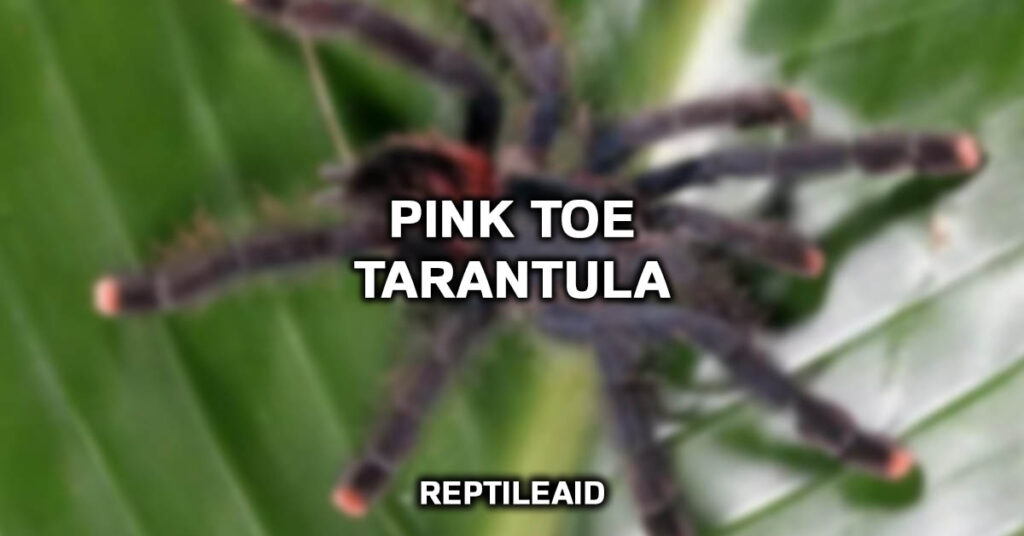
Pink Toe Tarantula Care
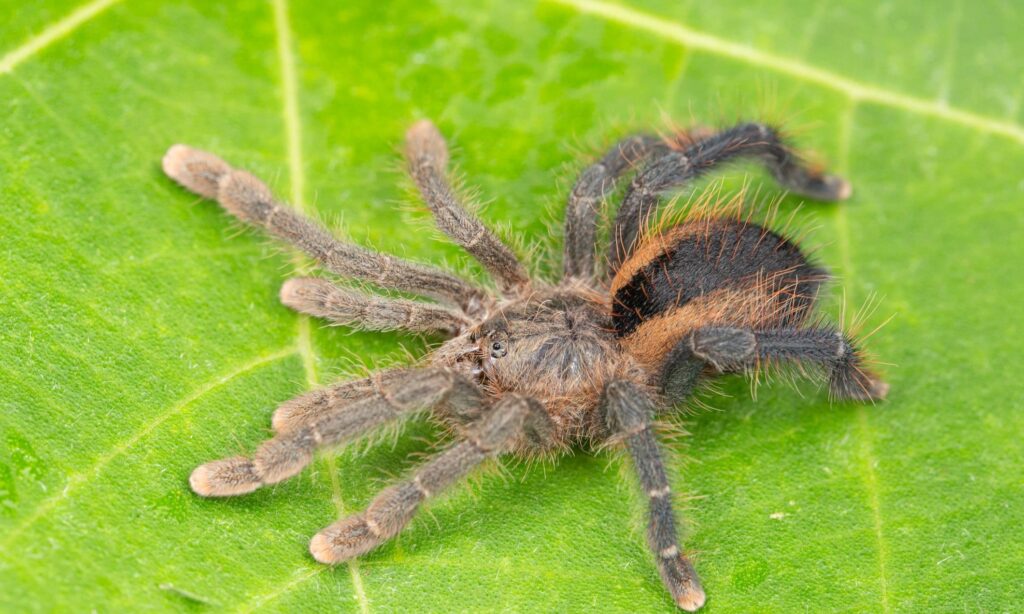
This particular specie among others is just perfect for beginners for they have very simple care needs that makes them easy to handle. They are shy and submissive. These creatures live best in higher humidity 65 to 75 percent in your enclosure. The most challenging part is keeping the humidity level high at all times.
What makes them special
There are three distinguished characteristics in them, they are not aggressive compared to other tarantulas, they are low in maintenance with simple needs and they carry beautiful peached colored legs.
Does caring require much work?
It really does not require much work but careful routine check-ups on their well-being are a must to maintain their well-being and state of health which includes proper humidity, water, food, and substrate.
Owners should be sensitive to their needs and you can do well in caring for pink-toe tarantulas more so if you had owned pet spiders in the past. To provide a similar dwelling place similar to a jungle, creating a misty place would be perfect.
Water is very basic that should always be available in their cage. They could struggle if humidity is too low while shedding and this t could lead to death in some cases. Do not place your spider’s enclosure by a window, especially in the absence of curtains. There is a danger of being exposed to the heat of the sun and once it happens your pet can be harmed and may even die.
In the wild, they love to eat a variety of prey such as small crickets, lizards, and frogs, however, in captivity they will have to contend with what you offer usually a properly sized feeder. A lot of options are available and most of them are found in pet stores otherwise if keepers want to take on the task of feeding them with their natural food then they have to find them themselves.
Always remember to maintain the cleanliness of their cage at all times and if not this can cause stress that may affect their behavior. Be cautious too about the mold growth in their cage that can grow in a humid area. Remove right away any portions of soil bedding where mold loves to grow.
Expert Tip: Make sure to change the bedding roughly every four to six months to avoid any untoward disturbance that will make your pet uncomfortable.
Common health problems
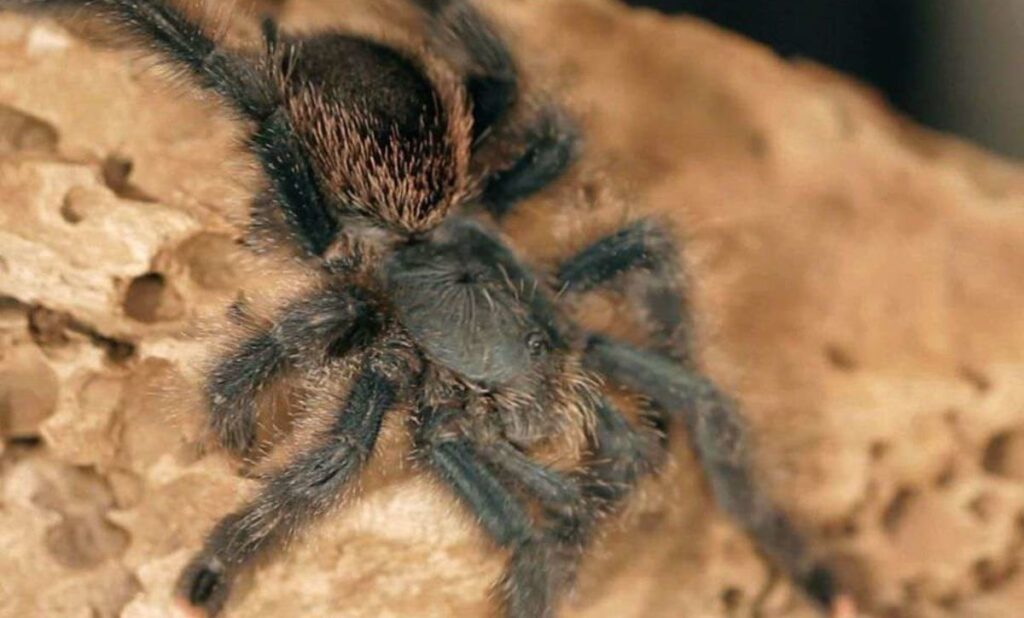
Although they are generally hardy animals it does not mean that they face fewer health problems in captivity. They still need close monitoring of their behavior like loss of appetite or less mobility which may indicate a potential health issue.
If one is an amateur keeper, he might not be able to distinguish the molting cycle from sickness. Molting is when the spider sheds its exoskeleton to form a new one. A manifestation of this is when they appear a little sluggish and might lose appetite which can alarm owners not familiar with the process.
Molting only takes a few hours but then the new exoskeleton needs time to harden to become protective. This whole process takes a few weeks to bring them back to their normal behavior and if the molt seems to take a little longer then you must consult a veterinarian.
Habitat
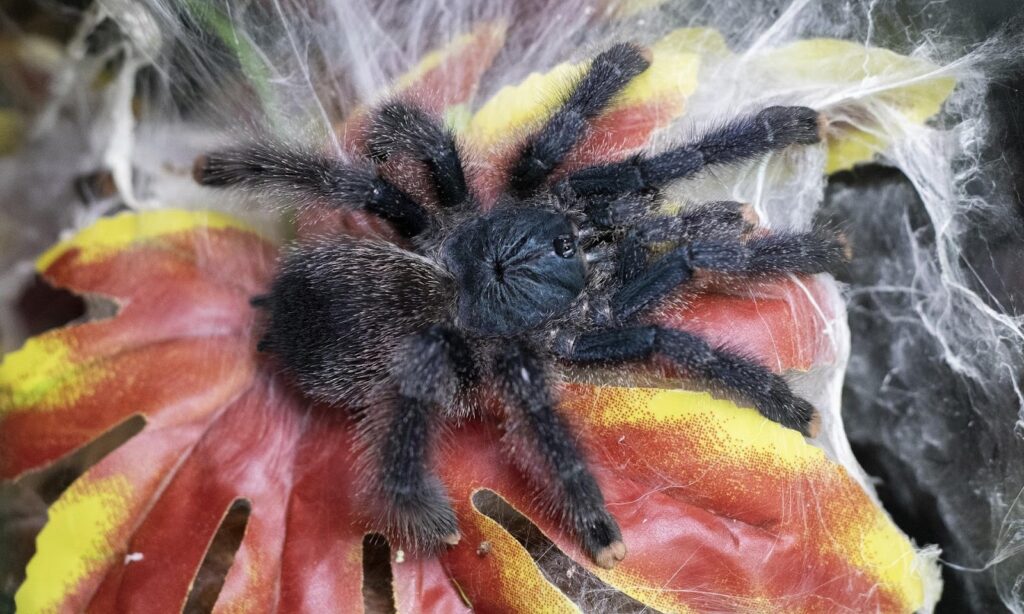
The pink-toed tarantulas are found in Costa Rica Brazil and the regions of the southern Caribbean.
Where do they thrive?
They find home in the trees and other plants throughout the rainforest. Since their original habitat is trees, they are arboreal species in nature therefore they require height when it comes to the enclosure.
It should have an area of 12x12x18 enclosure providing somehow a space for their known environment. To keep the required humidity plastic enclosures are always the best. But in some modifications where one is more concerned with aesthetics glass terrariums also work well.
Another area of importance is ventilation. It is a key to enhance the living condition of this specie because poorly ventilated enclosures become muggy and if it causes a change to the humidity requirement that may kill your pet.
On the other hand, the too-wet substrate can also invite mites and mold easily. In designing its closure you have to be conscious of the front or side opening to make it suitable for arboreal species and to allow them to climb. A good specification should be at least 3x the leg span of the spider and 2x wide.
It would be wise to create the bottom of the tank something that will replicate their natural habitat like lining a coconut cave, husks, and reptile barks that will match those in jungle conditions and should be at least two inches deep.
To add humidity inside the closure keeping several plants can give extra help. These plants not only provide the much-needed humidity but they are also perfect in providing areas for breeding and egg-laying. This particular species live well if you maintain the enclosure at 78 degrees to 82 degrees F with a humidity level of 65% to 75%.
Other forest-like materials suited for climbing are also helpful. As pets, the best thing to give them is a place that can mimic their natural habitat together with live prey. When takers handle their pet spiders to their best, these animals become a source of enjoyment as you watch their interesting behavior.
Life Span
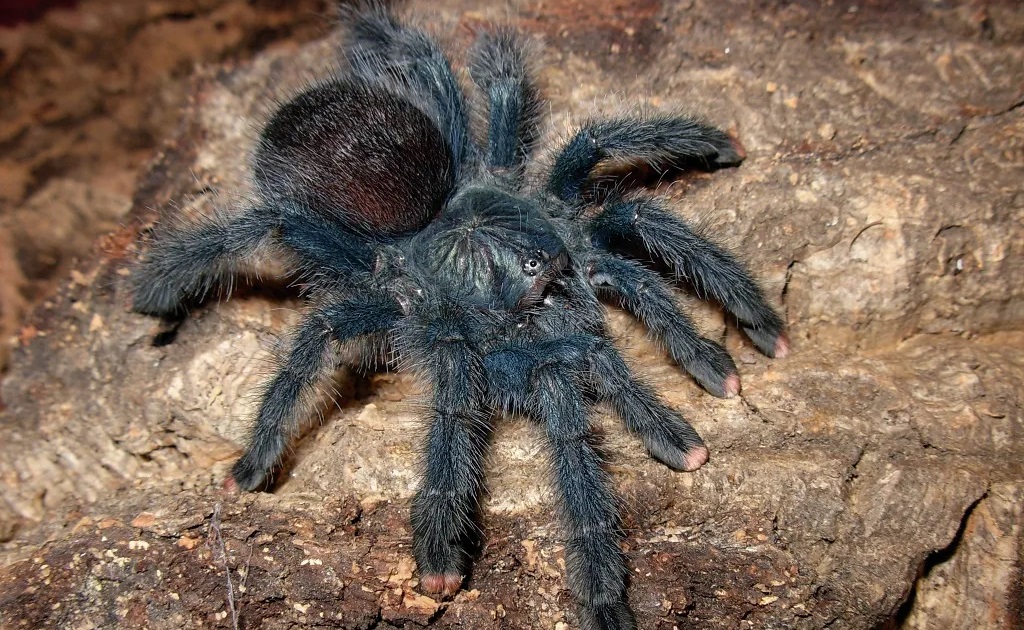
On average, their life span is four to eight years and their maturity is within two to three years although when in captivity they can live up to 10 years.
How’s their lifespan measured?
They are highly dependent on their gender, size, habitat, and diet. Just like humans, health issues are also vital in their life span. They can also contract the disease from parasites that usually come from unsanitary prey caught in dirty tank conditions. Always be observant of their behavior as to their refusal to eat and inactivity.
The males have a shorter life span of about two to three years while the female lives between six to eight years. If you are a serious pet lover who takes care of a number of pets, what happens if you miss feeding your red-toe tarantula for a day? No worry because it can survive up to 9 days without food for as long as they have enough supply of water in a dish.
Expert Tip: Feeding should happen at night since that is the time when they are active. To prevent health problems always make sure that they have a clean enclosure, feed them appropriately, and make clean water always available.
How Big Can They Get?
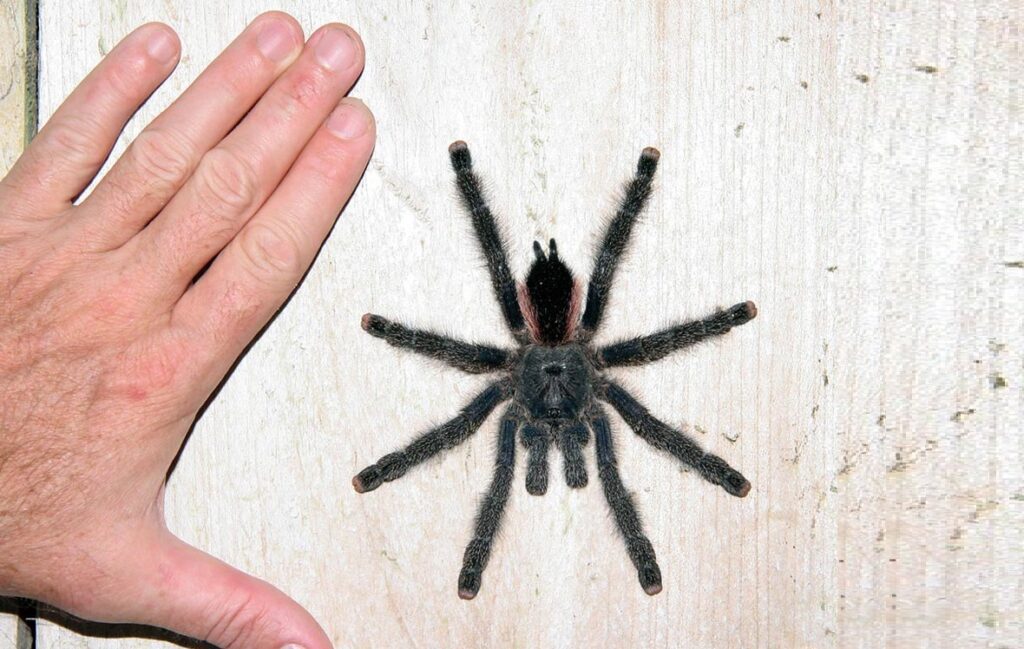
On average, they are medium-sized tarantula that grows between 4.5 to 6 inches (11-15) in length. They have an average leg span between 4 to 5 inches.
How do you determine the size?
Its size is usually determined by how it periodically shed its old exoskeleton after growing a new one underneath. It is called molting. They grow dramatically with each molt. Although it is a common feature among tarantulas to have a bulky body with thick legs, it is easy to distinguish a male from a female because males look thinner while females look bulkier.
The red-toe tarantulas as they grow from hatchling to juvenile can weigh from 3 grams to a large 30 grams as an adult.
Breeders
To safeguard the interest of the breeders Pink Toe Tarantulas, always buy from a well-verified captive breeder.
Best approach
When finding a pink toe tarantula to legally acquire there is no better way than due diligence. In most areas, they are legal to keep, though certain local laws might prevent you from owning one
In this case, look for a reputable breeder or you may ask for help from an exotic rescue organization. When buying a pink toe tarantula, make sure you learn its age and gender. Also, look for the active ones who move quickly. If possible ask to see the spider eat.
Be observant, and avoid those that are hunched with their legs curled under them. There are those unscrupulous vendors who would attempt to catch and sell wild-caught tarantulas in their juvenile state and be taken away from their natural habitat and sold in the open market depriving them of growth. This is an illegal practice and should not be patronized, because what they sell are species much younger and not ready for takers.
It is always prudent to buy a captive-bred tarantula. Always look for active tarantulas in the enclosure with full-blown covering hairs. Do not buy inactive and dull ones, they are likely unhealthy.
Are Pink-Toed Tarantulas Friendly?
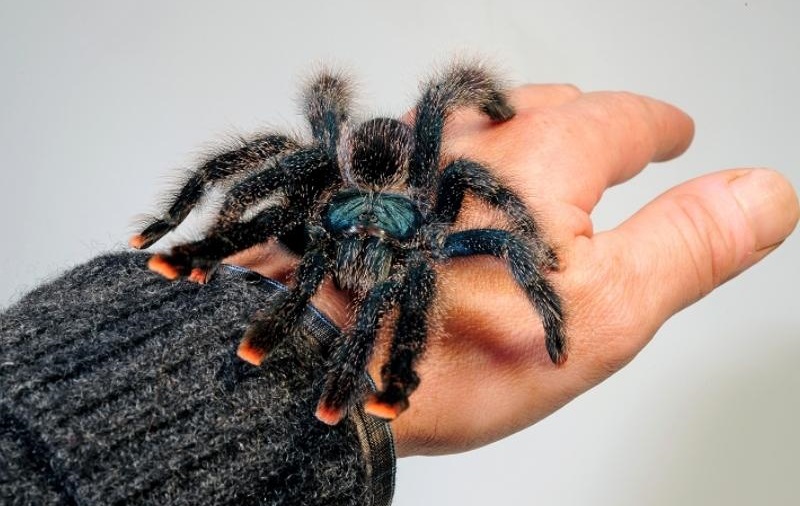
You will find the pink-toed tarantulas are quiet animals and are often seen sitting in a restful state position in their closure.
How friendly are they towards other species and keepers?
They become busy when they start to hunt for their prey. They could be friends with other species as they are willing to share their enclosure with them but they do not necessarily need their company. There are those who do not prefer to handle them but there are a lot who enjoy holding them.
They usually don’t mind sitting on your hand for as long as they feel calm in you and they are not agitated.
Although they may be playful they are unpredictable at times and may jump out of your hands when they get startled. That is why it is practical to handle your spider while they are sitting on the ground. In general, they are friendly as pets however there are instances when threatened may bite you.
How Venemous Is A Pinktoe Tarantula?
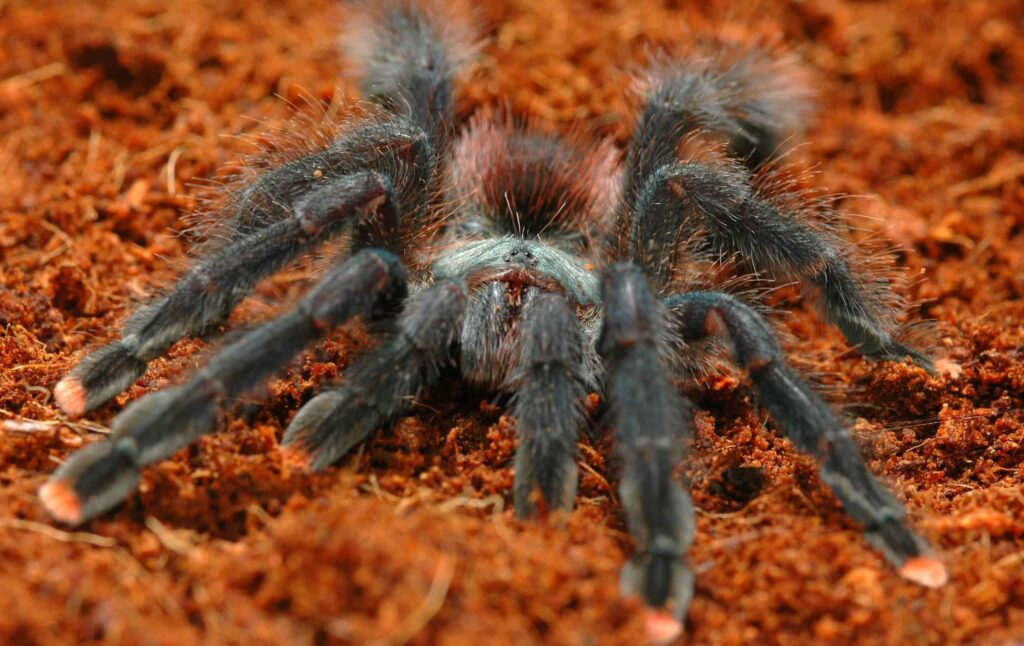
The spider has toxic venom although it only causes local reactions of redness and swelling and pain similar to a bee sting.
Can their venom kill?
There is no recorded instance of a tarantula killing a human being even among the most perceived dangerous tarantulas in the world. It appears that their venomous bite though carrying venom is designed to take down smaller prey for their food.
But there are times when it could be life-threatening if the one bitten has an allergic reaction to the venom. It may cause difficulty in breathing and will need immediate medical attention.
What Do Pink-Toe Tarantulas Eat?
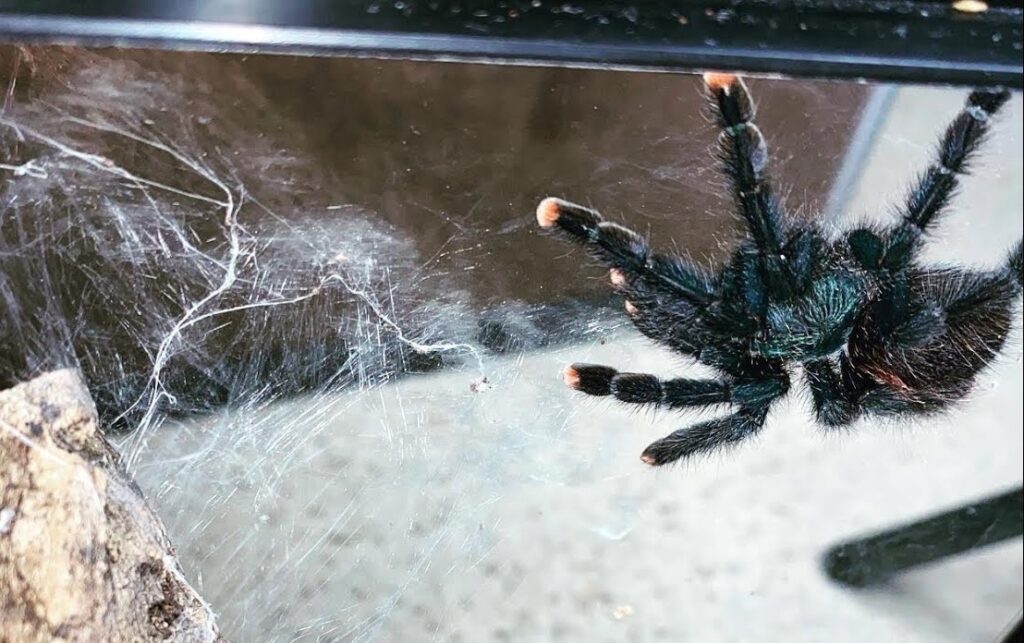
Crickets are always the best choice for tarantulas because they are insectivores. There may also be other welcome meals like moths, mealworms, or live grasshopper it is highly dependent on the tarantula.
What to feed the pink-toe tarantulas:
Buy live creatures
For safety purposes, buy live crickets at pet stores. Buy them in stubs or in bulk orders and keep them alive.
Determine the size of the prey
The prey should be around half the size of the tarantula’s leg span or smaller than the length of its body. Build a cricket cage. Learn to breed crickets so that every time you feed you provide live ones. Nourish the crickets.
Expert Tip: Remember that your tarantula gets their nutrition from the food you give therefore it is best to feed a healthy cricket than a starved one. Make sure that what you feed is gut-loaded to ensure proper nutrition to support their well-being.
Serving tarantula meals
Make available prey in the cage
The best approach is to put live prey inside the cage and let the tarantula eat according at its own pace. If the insects available are small you may put several in the cage at once. Some owners prefer to feed one at a time over several days to avoid stress or harassment from uncaught prey if there are many.
In the event that the prey looks bigger and stronger remove it right away not to undermine your pet’s current strength and desire to eat.
Try to dangle prey if necessary
There are times that the full-grown tarantulas do not recognize live prey and try to poke it lightly to induce movement Make a shallow dish of water. Always make available a shallow dish of water about half an inch and fill it with water enough to let the tarantula plunge its fangs.
Change the water daily to avoid the dish from attracting molds. Although they do not drink much availability of water in the environment provides moisture.
Provide a timeline for tarantula meals.
Keep a record of the frequency of your feeding activity, baby tarantulas are fed more often. Offer the most appropriate food to young tarantulas once or twice a week. Underfeeding may cause dehydration which can lead to death.
Some owners thought that feeding the young ones every day is healthy but it may cause damage instead because of overfeeding. Monitor the grown-up ones. The behavior of the full-grown tarantulas differs in the number of times you feed them, they will likely take prey 10 to 14 days apart.
There are instances where spiders abstain from eating after a large meal although tarantulas keep eating until they are full.
Remove leftovers
Clear the cage from uneaten food within 24 hours to prevent the stressful behavior of your pet. Besides a cage with untidy surroundings may attract pests and mold.
During molting period
It is not a practice to feed a newly molted tarantula at least for about three days as its skin is still soft and vulnerable when exposed to a live cricket that can harm them.
Observe and adjust
One trait of a tarantula is its ability to self-regulate its meal but this does not mean that it can be left alone to tend to itself. There is also a possibility that overeating may occur and you must be able to spot it right away.
Expert Tip: Keep your eye open to observe their abdomen, if they are shriveled chances are they are dehydrated and underfed on the other hand if they are big it will affect their mobility so you may need to feed them less frequently.
What Happens When a Pink Toe Tarantula Bites You?
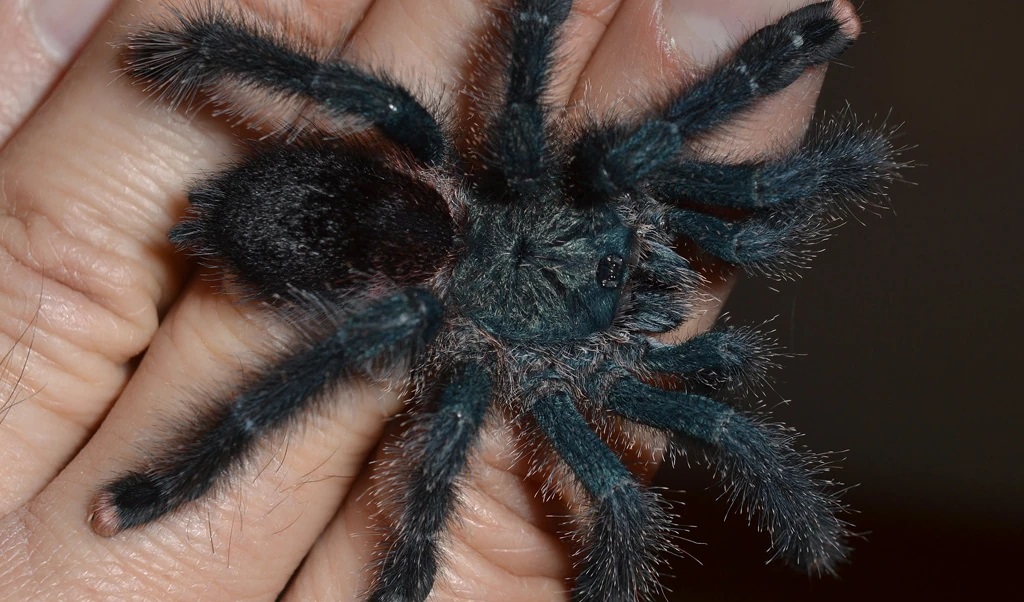
The idea of a spider biting you is quite nerve-racking. The Pink Toe Tarantulas have a very calm and non-aggressive temperament. As are most spiders, the Pink Toe Tarantulas are venomous. The good news is that their venom is meant for very small prey such as grasshoppers, flying insects, roaches, etc.
Should a Pink Toe Tarantula bite you, do not worry! The bite and venom cause a very mild reaction. Some redness and swelling may appear. Due to the size of their fangs, the bite will fill much like a bee sting. There have been no documented deaths from this type of spider bite. Rarely, there have been other severe reactions.
If a Pink Toe Tarantula bites you, stay calm. Generally, the bite are may be left alone. It will heal on its own. It is suggested, however, that the bite area be washed with regular soap and water. Ice will help with swelling. Monitor the bite for the next few days. Although unlikely, if the redness or swelling worsens, take a visit to a local medical provider.
The Calmest Tarantula
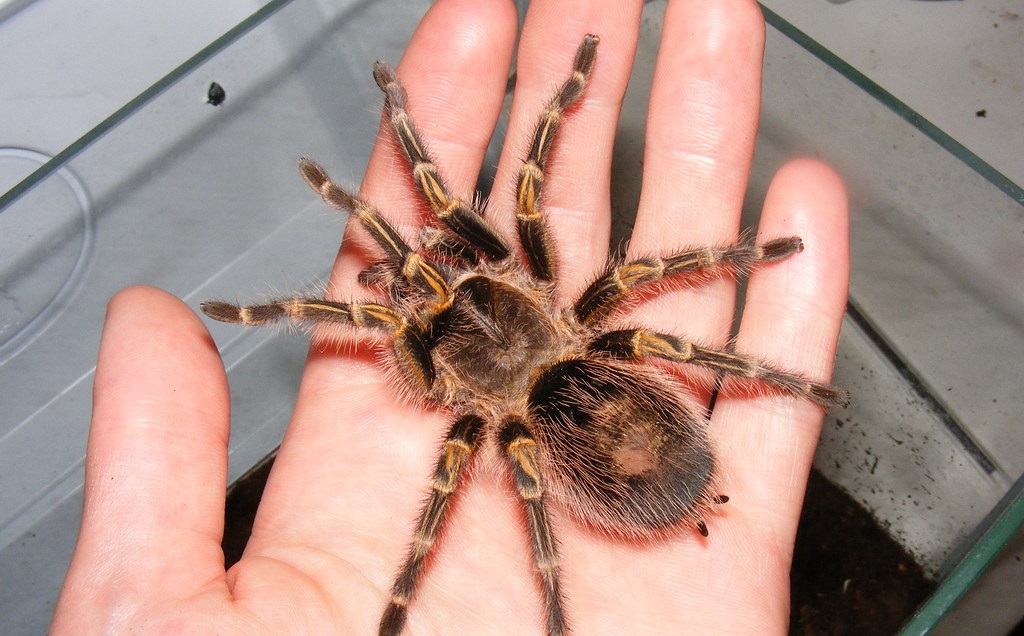
Sometimes, looks can really be deceiving. It’s absolutely true and the tarantula is no exemption. They look a bit scary on the outside as most eyes perceived but tarantula also possesses a certain sort of calmness and gentleness on the inside that others even visually appealing creatures don’t have.
And speaking of tarantulas, Chaco Golden Knee, without a doubt, is the calmest of them all.
Also known as the Grammostola Pulchripes, Chaco Golden Knee is a tarantula of large size. They are quite bigger than the usual with striking appearance but evidently, a much more calm, docile, friendly, and relaxed tarantula compare to other species aside from their low harmful impact.
Having said that, this is also one of the most recommended specie for all tarantula enthusiasts to pet as a beginner. But never forget that every species of tarantula have its own unique character and personality. My option may be different from others but what is the best way to affirm a statement?
That is through personal and hands-on experience being a keeper of tarantulas myself. And regardless, one thing is for sure, It’s our relationship and the way we treat tarantula that will unleash the calmness or fierceness in them. Indeed, we don’t easily judge a book by its cover. We can learn that from Chaco Golden Knee!
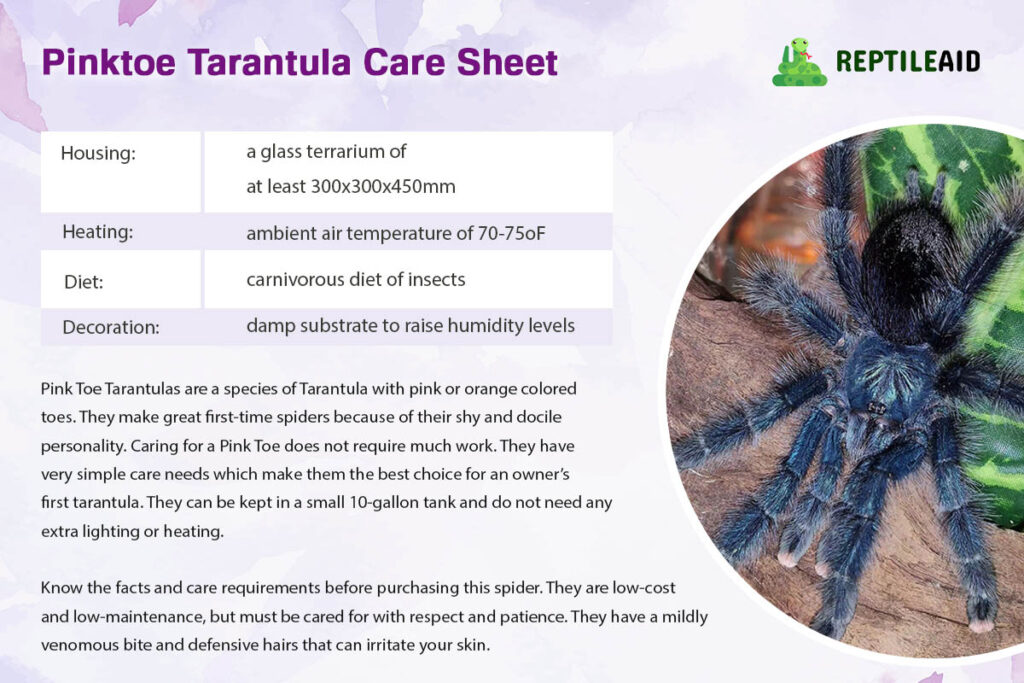
Conclusion
The pink-toe tarantulas may look scary as depicted in novels and movies. However, keeping them as pets can be a fascinating hobby because they are interesting to watch and among the tarantulas, they are the submissive type making them the first choice for beginners or pet-loving people.
They deserve patience and respect after all they are low-cost and low in maintenance. They are friendly and have very simple needs making them easy to handle. It does not require much work at all.
